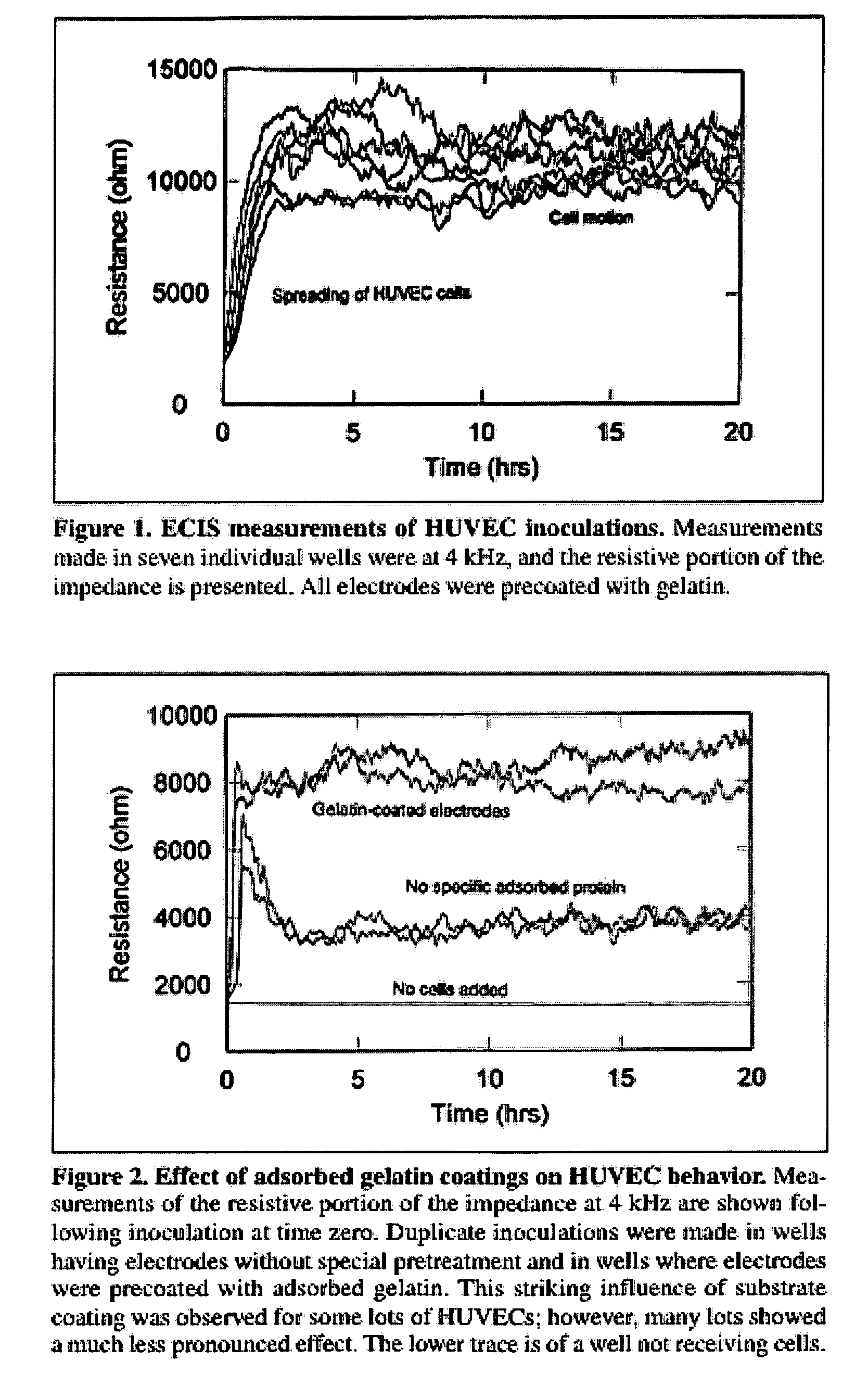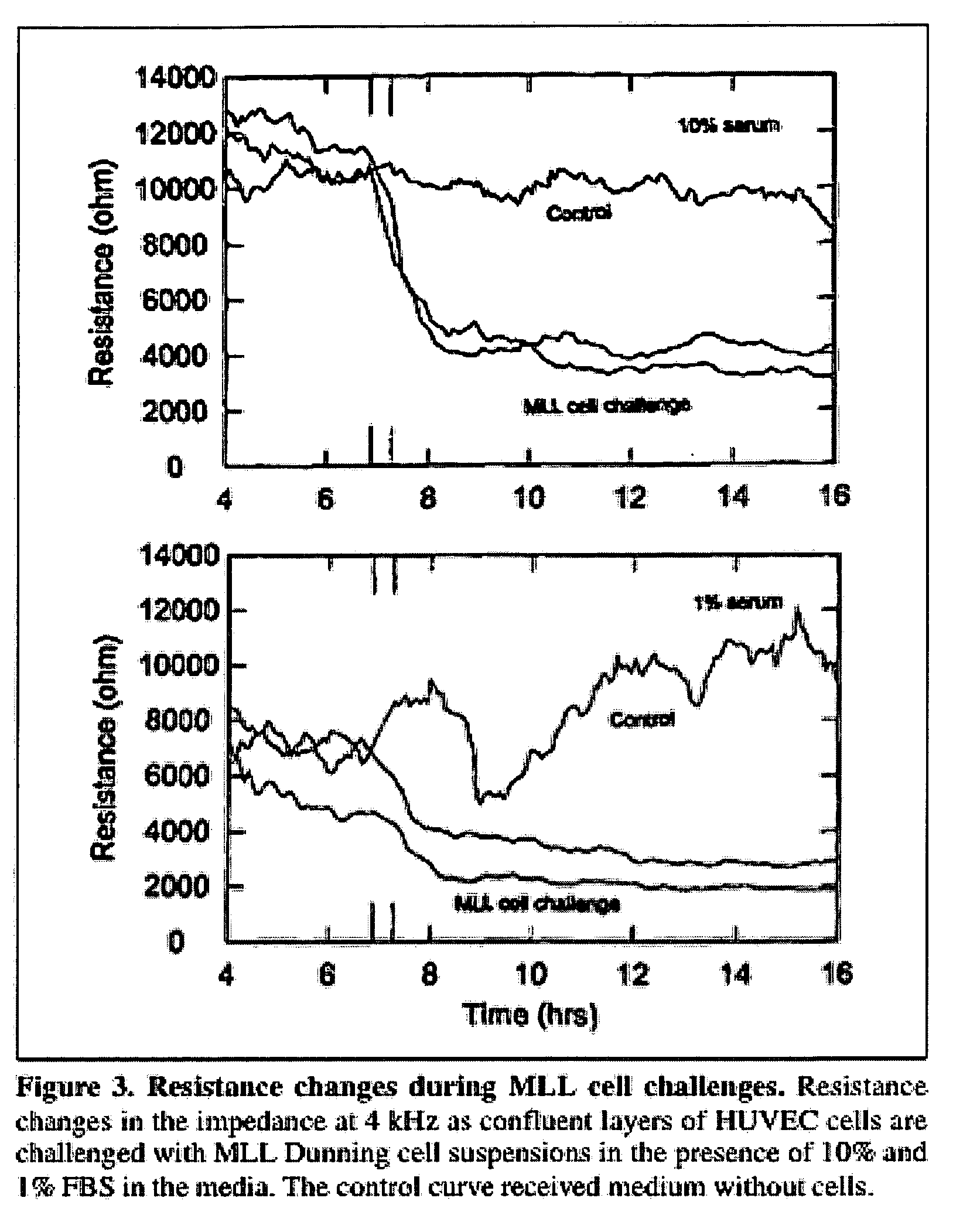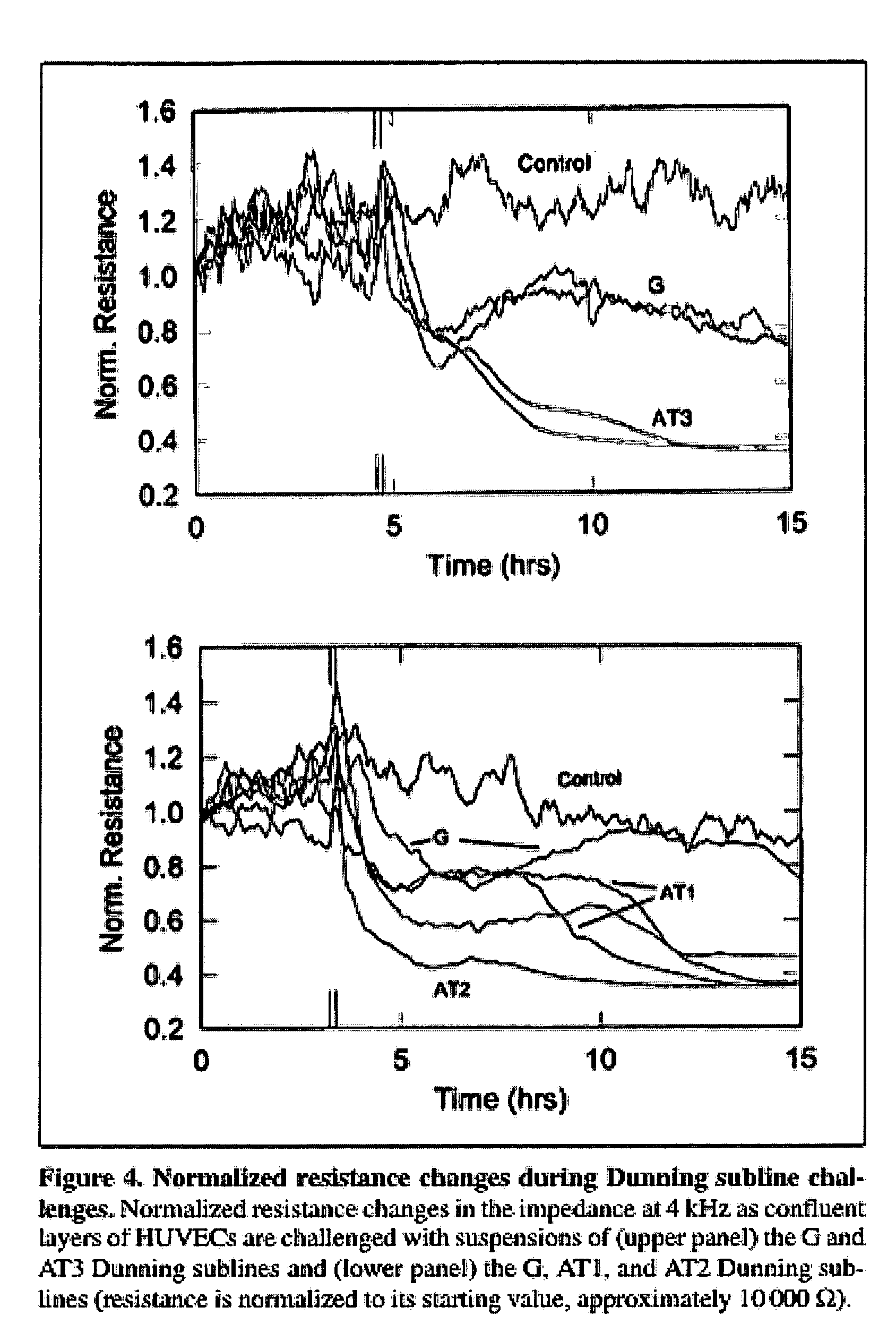Real-time impedance assay to follow the invasive activities of metastatic cells in culture
a metastatic cell and impedance assay technology, applied in the field of cell monitoring, can solve the problems of difficult quantification, inability to provide information in real time regarding the dynamics of the process, and organism death
Active Publication Date: 2008-07-15
APPLIED BIOPHYSICS
View PDF1 Cites 26 Cited by
- Summary
- Abstract
- Description
- Claims
- Application Information
AI Technical Summary
Benefits of technology
"The present invention provides methods for assessing the metastatic potential of cells by measuring the effect of the cells on the impedance of an electrode. This can be done in vitro or in vivo. The methods can be used to test the efficacy of anti-cancer therapies and to establish indicators of metastatic potential based on a cell's effect on impedance. The invention provides a simple and reliable method for evaluating the metastatic potential of cells, which can aid in the diagnosis and treatment of cancer."
Problems solved by technology
As these activities are repeated, multiple tumors are established and, if unheeded, ultimately result in the death of the organism.
The assay provides striking images of the behavior of the metastatic cell but, by nature, is difficult to quantify and cannot provide information in real time regarding the dynamics of the process.
Such labeling, however, often utilizes hazardous probes or requires the use of specialized equipment in order to produce quantitative data.
Method used
the structure of the environmentally friendly knitted fabric provided by the present invention; figure 2 Flow chart of the yarn wrapping machine for environmentally friendly knitted fabrics and storage devices; image 3 Is the parameter map of the yarn covering machine
View moreImage
Smart Image Click on the blue labels to locate them in the text.
Smart ImageViewing Examples
Examples
Experimental program
Comparison scheme
Effect test
example
A. Materials and Methods
the structure of the environmentally friendly knitted fabric provided by the present invention; figure 2 Flow chart of the yarn wrapping machine for environmentally friendly knitted fabrics and storage devices; image 3 Is the parameter map of the yarn covering machine
Login to View More PUM
| Property | Measurement | Unit |
|---|---|---|
| frequency | aaaaa | aaaaa |
| frequency | aaaaa | aaaaa |
| frequency | aaaaa | aaaaa |
Login to View More
Abstract
The present invention provides methods for the assessment of the metastatic potential of cells by measuring the effect of the cells on the impedance of an electrode. Accordingly, the present invention similarly provides methods for establishing indicators of metastatic potential based on a cell's effect on impedance. Such methods may be employed in vitro or in vivo. In some embodiments, the electrode is coated with endothelial or epithelial cells.
Description
CROSS-REFERENCE TO RELATED APPLICATIONS[0001]The current application claims the benefit of co-pending U.S. Provisional Application No. 60 / 501,714 filed Sep. 10, 2003, which is hereby incorporated herein by reference.BACKGROUND OF THE INVENTION[0002](1) Technical Field[0003]The present invention relates generally to the field of cellular monitoring and more specifically to methods for assessing cellular metastatic potential through impedance monitoring.[0004](2) Related Art[0005]The growth of large solid tumors is dependent on an aberrant cell exhibiting uncontrolled proliferation and expressing the genes required to recruit endothelial cells to undergo angiogenesis, allowing the mass to grow beyond the constraints of passive diffusion (10). Notwithstanding, these behaviors alone do not result in multiple tumor formation—the hallmark of most malignant cancers. For secondary tumor formation via a blood-borne route, some tumor cells leave the primary mass, disrupt the basement membrane...
Claims
the structure of the environmentally friendly knitted fabric provided by the present invention; figure 2 Flow chart of the yarn wrapping machine for environmentally friendly knitted fabrics and storage devices; image 3 Is the parameter map of the yarn covering machine
Login to View More Application Information
Patent Timeline
 Login to View More
Login to View More Patent Type & Authority Patents(United States)
IPC IPC(8): C12N5/00C12N5/02C12Q1/00C12Q1/02G01N33/50
CPCC12Q1/001G01N33/5008G01N33/5064G01N33/502G01N33/5044G01N33/5011
Inventor GIAEVER, IVARKEESE, CHARLES R.
Owner APPLIED BIOPHYSICS
Features
- R&D
- Intellectual Property
- Life Sciences
- Materials
- Tech Scout
Why Patsnap Eureka
- Unparalleled Data Quality
- Higher Quality Content
- 60% Fewer Hallucinations
Social media
Patsnap Eureka Blog
Learn More Browse by: Latest US Patents, China's latest patents, Technical Efficacy Thesaurus, Application Domain, Technology Topic, Popular Technical Reports.
© 2025 PatSnap. All rights reserved.Legal|Privacy policy|Modern Slavery Act Transparency Statement|Sitemap|About US| Contact US: help@patsnap.com



